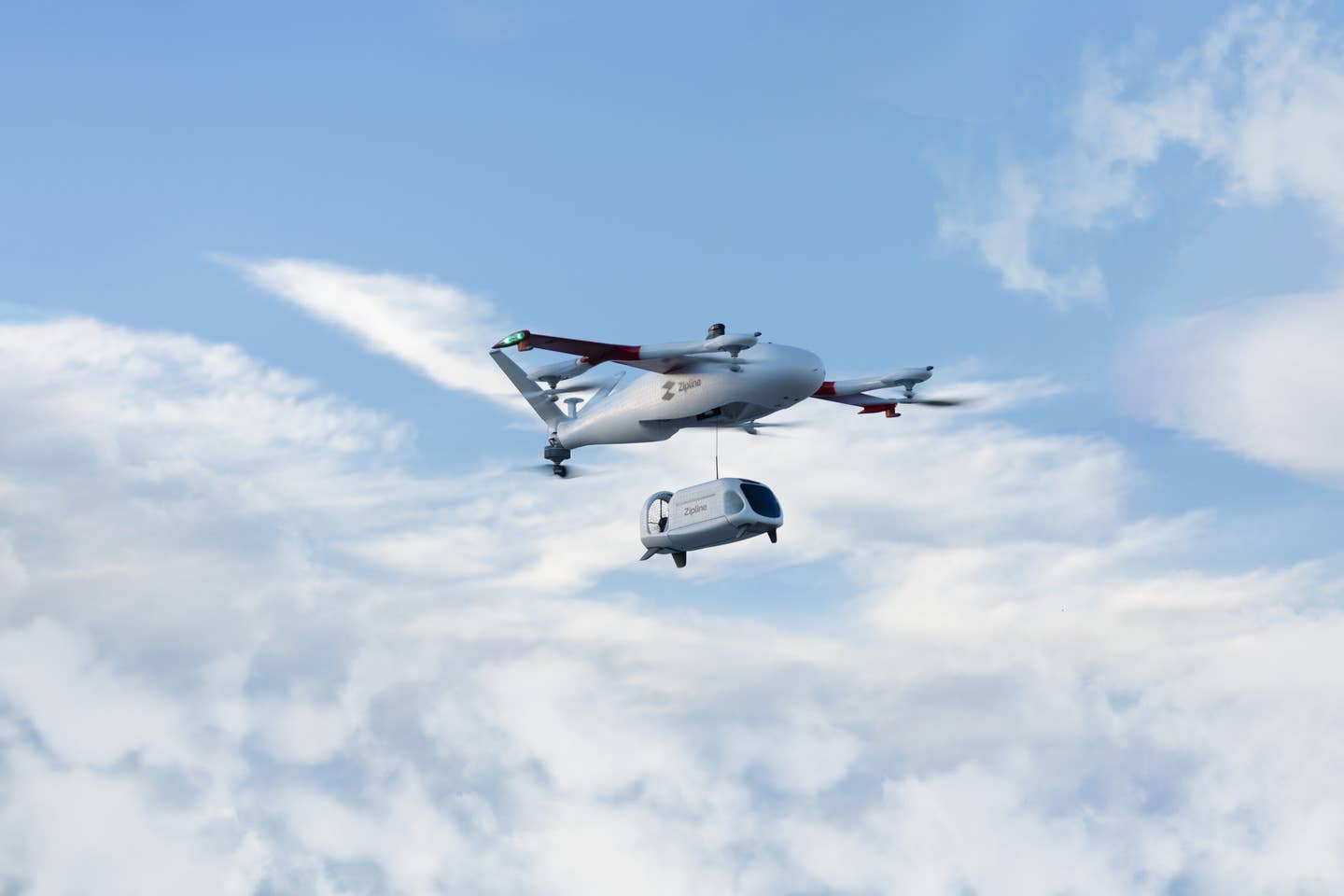NASA Reveals the X-59—Its Antidote to the Sonic Boom
The experimental aircraft is expected to fly 1.4 times the speed of sound, or around 925 mph, according to NASA.

NASA’s X-59 quiet supersonic research aircraft sits on the apron outside Lockheed Martin’s Skunk Works facility at dawn in Palmdale, California. The X-59 is the centerpiece of NASA’s Quesst mission, which seeks to address one of the primary challenges to supersonic flight over land by making sonic booms quieter. [Courtesy: Lockheed Martin Skunk Works]
A dramatic curtain drop at Lockheed Martin's Skunk Works facility in Palmdale, California, on Friday gave the world its first look at the X-59—NASA's new experimental aircraft designed to quiet the sonic boom.
The one-of-a-kind X-59 Quiet SuperSonic Technology (QueSST) aircraft is part of NASA’s Low Boom Flight Demonstration project aimed at collecting data to help shape regulations for possible future commercial supersonic flight over land 50 years after it was banned by the FAA due to the noise of the sonic boom.
It's expected to fly 1.4 times the speed of sound, or around 925 mph, according to NASA.
- READ MORE: NASA Ready to Roll Out Experimental X-59
“This is the big reveal,” said Catherine Bahm, the manager of NASA’s Low Boom Flight Demonstrator project who is overseeing the development and build of the X-59. “The rollout is a huge milestone toward achieving the overarching goal of the Quesst mission to quiet the sonic boom.”
Bob Pearce, associate administrator of NASA Aeronautics Research Mission Directorate, recalled one of America’s test flight heroes during the ceremony.
"This journey actually began in 1947, when the era of supersonic flight started right here in the California high desert with test pilot Chuck Yeager in the X-1," said Pearce. "It soon became apparent that the sonic boom's sharp thunderous sound heard when the airplane flies overhead at supersonic speed was going to be a problem."
Engineering Sound Through Shape
The X-59 is designed to lessen the perceived sound of a sonic boom to that of a gentle thump, and it does that through a specialized aircraft shape.
"What's most obvious right away is the long, distinct nose which comprises almost a third of that 99.7-foot length," said NASA Deputy Administrator Pam Melroy. "This design is really critical in dispersing shockwaves" and preventing the shocks from merging together and creating the boom.
The cockpit sits almost halfway down the length of the aircraft, and there's no forward-facing window, which would have increased noise, Melroy said.
"It's a huge challenge—limited visibility in the cockpit," Melroy said. "The team developed the external vision system, which is really a marvel of high-resolution cameras feeding an ultra-high-resolution monitor. Beyond its immediate applications in the X-59, the external vision system has the potential to influence future aircraft designs, where the absence of that forward-facing window may prove advantageous for engineering reasons. It's creating capabilities that we haven'
NASA will collect data on how communities perceive the sound of the X-59 flights, which will then be used to inform the agency’s recommendations for an acceptable noise-level standard for commercial supersonic flights and possibly repeal the current ban of supersonic flight over land.
- READ MORE: NASA X-59 Cleared for Final Assembly
"The unveiling of NASA’s X-59 supersonic aircraft is a major milestone in aviation history that has the potential to transform our industry,” said Dave Schreck, vice president and general manager of military avionics and helicopters at Collins Aerospace, which provided the primary avionics system on the aircraft.
The X-59 is expected to take its first flight later in 2024.
"The Quesst team will conduct several of the aircraft’s flight tests at Skunk Works before transferring it to NASA’s Armstrong Flight Research Center in Edwards [Air Force Base], California, which will serve as its base of operations," NASA said.
Watch: Time-Lapse Video of the X-59
This time-lapse video shows the manufacturing of the X-59 aircraft from May 2019 to June 2021 when the merger of its main sections—the wing, tail assembly, and fuselage—was completed.

Sign-up for newsletters & special offers!
Get the latest FLYING stories & special offers delivered directly to your inbox






